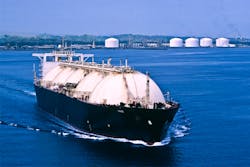Oil and Gas News: EIA projects US natural gas exports to exceed imports
US natural gas exports exceed imports
In February, April and May 2017, the U.S. exported more natural gas than it imported, according to the U.S. Energy Information Administration’s (EIA) Natural Gas Monthly. Contributing to this trend are a decline in net pipeline imports from Canada, an increase in natural gas pipeline exports to Mexico and a growth in exports of liquefied natural gas.
US expected to export more natural gas
In its latest Short-Term Energy Outlook, the EIA expects the U.S. will export more natural gas than it imports in 2017. The U.S. has been a net exporter for three of the past four months, and this trend is expected to continue for the rest of 2017 and through 2018 because of an increase U.S. natural gas exports to Mexico, a drop in pipeline imports from Canada and a growth in liquefied natural gas exports.
Domestic and export demand outpacing U.S. gasoline production
For the first seven months of 2017, gasoline production by U.S. refiners and blenders ran near record lows, and four-week rolling average production was well above its five-year average and close to the top of its five-year range. Gasoline inventories continue to remain above their five-year average despite increasing domestic and foreign demand leading to draws from gasoline stocks during the past seven weeks.
U.S. energy expenditures hit 10-year low
Expenditures for delivered energy in the U.S. in 2015 dropped 20 percent in real terms from the previous year to $1.127 trillion, according to the EIA’s State Energy Data System. Total energy expenditures for 2015 were the lowest since 2004, after adjusting for inflation.
The Strait of Malacca chokepoint is key for oil trade
The Strait of Malacca that links the Indian and Pacific oceans is the second-largest oil trade chokepoint in the world after the Strait of Hormuz. Nearly a third of the 61 percent of total global petroleum and other liquids production that moved on maritime routes in 2015 transitioned on the Strait of Malacca, according to the EIA.
Smaller price discounts for natural gas in Appalachian region
The difference between the Henry Hub national benchmark price and daily spot natural gas prices at pricing hubs in the Appalachian region has gotten tighter as new pipeline projects and expansions are completed, the EIA reports. This trend has been seen in several areas of the Appalachian region. Since January, the difference between prices at the Henry Hub in Louisiana and at Dominion South in southwestern Pennsylvania, averaged $0.53 per million British thermal units (MMBtu), which is about two-thirds the average difference of $0.76/MMBtu, during the first seven months of 2016.
